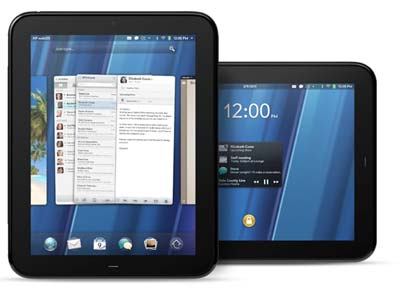
Our proud sponsors:












|
|
|
|
|
|
HP TouchPadAn epitaph on the HP TouchPadby Daniel Rasmus
August 19, 2011 — I was supposed to write a review of the HP TouchPad, but like so many others this morning, I am writing its epitaph. HP's decision on August 18, 2011 to cease production of the TouchPad as well as other WebOS devices leaves WebOS in limbo, though HP may try to recoup some of its investment by selling WebOS to another company. This is as much a strategic move as it is a technology one. HP has shifted direction to distance itself from the consumer market. After spending time with the TouchPad I think there remains room in the market for another worthy competitor to iOS. Android may have momentum, but it also has significant issues that make it inferior to Apple's operating system. Combine that with the uncertainty in the Android market precipitating from Google's acquisition of Motorola Mobility and the future of Android is even more uncertain. And of course, the Microsoft/Nokia deal may make Microsoft's Windows platform a contender, but that remains to be seen.
The WebOS offered simple access to calendar, contacts and e-mail, and world-class integration with existing platforms, including Microsoft Exchange. Eventually this could have been the link between the TouchPad and HP's enterprise aspirations, as Apple still has skeptics about Apple's ability to adequately serve the security needs of the corporate world, and the questionable future of RIM, both as a platform and a company.
On the Adobe Flash battle front, I found HP's implementation much more fluid that Android's. Websites using Flash look and behave pretty much like they do on a PC. Google and its partners need to spend more time making the Flash experience live up to their marketing hype.
Although HP's App Catalog isn't filled with all of the goodies found in Apple's app store, it was well presented and well integrated. Unfortunately, HP chose to ship the TouchPad with beta versions of Kindle and QuickOffice (read-only), which reinforced the perception that the platform wasn't ready for primetime.
Overall, the user experience, from the card metaphor for open, multitasking apps, to the "just type" entry at the top of the screen that did its best to interpret user intent and the uncluttered environment would probably have won some adherents if not in this hardware incarnation, perhaps in the next one.
Unfortunately HP would need to spend millions of dollars to reengineer and retool, and it would be months or a year before anything new hit the market. Revamping a technology platform is much more like rebooting a tired entertainment franchise. It needs to be reimagined from the inside out, and sometimes that works, and sometimes that doesn't. Although audiences often complain about Hollywood's lack of original ideas, they do invest huge amounts of money and take enormous risk to reboot a franchise. Just this week it was announced that little known Warner Brothers partner Alcon Entertainment was funding 73-year old Ridley Scott to create either a prequel or sequel to 1982's disappointing-cum-cult-class Blade Runner. That is a risky move on many levels. If WebOS does end up with another reboot, it needs to be a meticulously detailed and as lovingly re-crafted as JJ Abram's Star Trek universe. Anything short of that would be a waste of time.
And what the somewhat chunky HP Touchpad couldn't run from was the fact that it didn't out-style the competition. It was a bit heavy and a little slow. If you don't get the cosmetics right for the role, nobody's going to spend time figuring out if you can act or not.
It makes strategic sense to focus on a high margin growth business like enterprise software and services—it makes sense to rally the troops around a common comprehensible theme, to avoid distraction and to concentrate on execution.
I am disappointed because this is another example of a company shying away from risk and innovation. Apple just became the most highly valued company in America because it combined risk with innovation, and it did so in the consumer market. It will be interesting to see if either Google or Microsoft has the stomach for risk as they play with their patent portfolios. And Apple is playing that game now too with Samsung. This nascent market needs a good battle, hopefully one that takes place on the shelves of retailers with innovative products going head-to-head rather than in courtrooms where winning may mean ultimately loosing what you should be fighting for.
Daniel W. Rasmus is an independent analyst and strategy consultant. He is a former Vice President at the Giga Information Group and Forrester Research. Dan is the author of five books, including Management by Design (Wiley, 2010) and Listening to the Future (Wiley 2008). He blogs regularly at http://danielwrasmus.wordpress.com. Additional information can be found at http://danielwrasmus.com.
|
 With a standard connector consumers could buy accessories that would migrate across platforms -- that may not help their accessory profits, but it would certainly reduce the costs of external components and accessories for consumers, which in this economy, is a good thing even for what many might consider luxury goods.
With a standard connector consumers could buy accessories that would migrate across platforms -- that may not help their accessory profits, but it would certainly reduce the costs of external components and accessories for consumers, which in this economy, is a good thing even for what many might consider luxury goods.